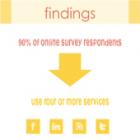
Fighting Words, a Rare Books Exhibition
Fighting Words is a collaboration with students and faculty from the Theater, and Film and Media Arts departments at the University of Utah. Actors performed dramatic readings of quotes from American Revolutionary War pamphlets printed on both sides of the Atlantic. This project brought students into the library where they experienced rare books through their own disciplines.
Videos of the dramatic readings accompany text and images from the original books on a multimedia website, www.fightingwordsonline.org. Viewers are guided through the exhibition in chronological order, learning about the origins, conflicts, and ultimate conclusions of the American Revolution from the words of the people who lived it. A dynamic website connects users to material and facilitates experiences with rare books outside the library.










